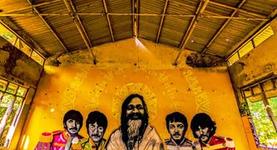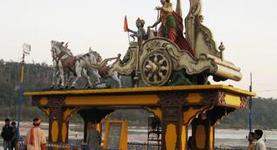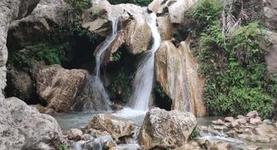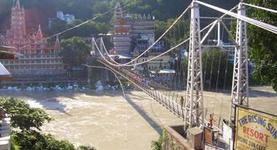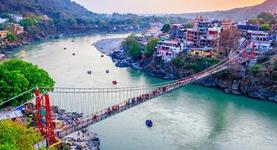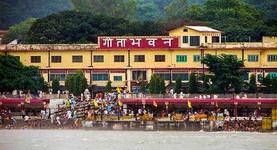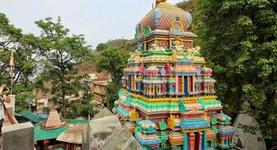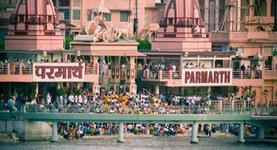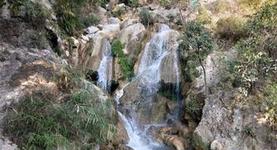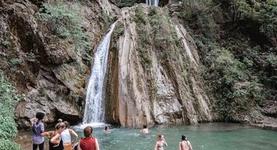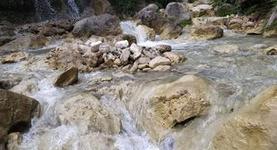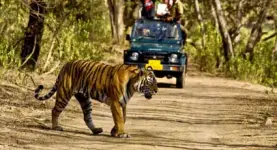
- Places to visit
- Kunjapuri Temple
Kunjapuri Temple
Rise to new heights of spirituality at Kunjapuri Temple, where devotion and nature meet in the Himalayas.
- Get Directions
- Enquire Now
- Share
- Leave a review
- Improve Details
Kunjapuri Temple Highlights
- Location: Kunjapuri Temple is situated on top of a hill, offering panoramic views of the surrounding Himalayan Mountains.
- Religious significance: Kunjapuri Temple is dedicated to the Hindu goddess Parvati and is considered one of the 52 Shakti Peeths, where the goddess is said to reside.
- Spiritual atmosphere: Kunjapuri Temple is known for its peaceful and spiritual atmosphere, attracting pilgrims and spiritual seekers from around the world.
- Scenic surroundings: The temple is surrounded by lush green forests and rolling hills, making it a beautiful and serene environment for visitors.
- Morning prayers: Kunjapuri Temple is particularly famous for its morning prayers, where devotees gather to offer prayers and perform puja rituals.
- Wildlife: The temple is located in an area with rich wildlife, including leopards, monkeys, and various species of birds.
- Trekking: Kunjapuri Temple is also a popular destination for trekking, with visitors often taking a short trek from the base of the hill to reach the temple.
- Environmental conservation: Efforts are underway to preserve the natural beauty and ecosystem of the area surrounding Kunjapuri Temple, with measures being taken to reduce human impact and protect the area's flora and fauna.
Kunjapuri Temple Overview
One of the top attractions in Tehri Gharwal is Kunjapuri Temple, which offers visitors a panoramic view of the Garhwal Himalayan peaks, including Swarga Rohini, Gangotri, Banderpunch, and Chaukhamba to the north and Rishikesh, Haridwar, and Doon Valley to the south. These peaks are all associated with mythical beings and goddesses. The sanctuary Kunjapuri is situated on the highest point of the hill Kunjapuri, which is 1,676 metres high. It is 7 kilometres from Narendra Nagar, 15 kilometres from Rishikesh, and 93 kilometres from Devaprayag, favouring onlookers. Many thousands of people visit this important sacred site every year, notably during the 'Navratras' (April and October). The Dussehra festival features large celebrations.
The celestial triangle of the shrines is related to a well-known tale about Sati, a young Daksha Prajapati girl who committed herself by self-immolation at the same location. Lord Shiva then grabbed Sati's body and started walking into the Himalayas. As a result, Kunjapuri, Surkanda Devi, and Chandrabadani—the places where pieces of her dead corpse fell—are regarded as Siddha Peeths.
The celestial triangle of the shrines is related to a well-known tale about Sati, a young Daksha Prajapati girl who committed herself by self-immolation at the same location. Lord Shiva then grabbed Sati's body and started walking into the Himalayas. As a result, Kunjapuri, Surkanda Devi, and Chandrabadani—the places where pieces of her dead corpse fell—are regarded as Siddha Peeths.
Ideal Time to Visit
The best time to visit Kunjapuri Temple is thought to be from May to October because of the bright sun on the hilltop. If you have the proper attire and accessories packed in your backpack, you can visit the temple at any time of the year. Navaratra is the ideal time for you to participate in extravagant celebrations, if you want to. Navaratra often happens between October and November. You will get the chance to sneak into the Hindu holiday festivities and grasp the purpose by seeing the social rituals and members' happiness.
Kunjapuri temple historical background
Lord Shiva's companion is the goddess Parvati. Goddess Parvati was known as Sati in her previous life. Even though she had married the Lord, her father, King Daksha, was not quite happy. He had planned a Yagna, a significant gathering during which offerings are given to Agni Dev (Fire God). He had purposefully refused to welcome his daughter and her spouse. When Sati learned of this, she was furious and made a decison to go wihtout invitation. Although Master Shiva tried to persuade her to change her mind, she remained adamant. Sati was told by Ruler Daksha that his reasons were simple public humiliation of her partner. Sati was furious and jumped into the conciliation fire to face death.
Shiva, the ruler, had been split apart. At the Yagna, he caused havoc and damage. At that time, Tandav carried the remaining pieces of Sati's body on his shoulder and began the act of Tandav's annihilation, which would ultimately destroy the universe. According to some interpretations, the Lord carried her body on his shoulders and walked wildly in anguish as he was in despair. The final customs were refused by him. The creator of the universe, Master Brahma, believed that Sati could not be resurrected as Goddess Parvati if her body was not properly incinerated as prescribed by Hindu scriptures. Lord Vishnu was concerned that Lord Shiva's suffering might cause the universe to eventually collapse.
The body was ripped into pieces by Lord Vishnu using his Sudarshan Chakra (Disk) since they were unable to contain or face Lord Shiva's fury. As Lord Shiva proceeded, a part of her body collapsed, and the holy entities completed her last rites. Shaktipeeth are the locations where the bodily fragments of heavenly Mother fell. Sanctuaries have been constructed around it and are still revered. People go across mainlands in search of Shakti's graces.
Shiva, the ruler, had been split apart. At the Yagna, he caused havoc and damage. At that time, Tandav carried the remaining pieces of Sati's body on his shoulder and began the act of Tandav's annihilation, which would ultimately destroy the universe. According to some interpretations, the Lord carried her body on his shoulders and walked wildly in anguish as he was in despair. The final customs were refused by him. The creator of the universe, Master Brahma, believed that Sati could not be resurrected as Goddess Parvati if her body was not properly incinerated as prescribed by Hindu scriptures. Lord Vishnu was concerned that Lord Shiva's suffering might cause the universe to eventually collapse.
The body was ripped into pieces by Lord Vishnu using his Sudarshan Chakra (Disk) since they were unable to contain or face Lord Shiva's fury. As Lord Shiva proceeded, a part of her body collapsed, and the holy entities completed her last rites. Shaktipeeth are the locations where the bodily fragments of heavenly Mother fell. Sanctuaries have been constructed around it and are still revered. People go across mainlands in search of Shakti's graces.
How to reach Kunjapuri temple
- By air: Jolly Grant Dehradun Airport is the closest airport to Kunjapuri.
- Rail: There is a train station at Kunjapure that connects Haridwar and Rishikesh. Rishikesh is (24 miles) apart from Haridwar.
- By car: Rishikesh has a well-defined road network that connects it to Delhi, Uttar Pradesh, and Garhwal. To go to Rishikesh, one may follow the National Highway 58 through Modinagar, Khatauli, Muzzafarnagar, Roorkee, Haridwar, and Raiwala.
Things to do in Kunjapuri
Yog: Kunjapuri is the ideal location for yoga. Through various pranayama and meditation techniques, yoga is incredibly beneficial for our body's fitness—not just physically, but also mentally and emotionally. Yoga can help you lose weight. One of the finest ways to lose weight and maintain your physique is by participating in kapal bharti.
Sunrise Point: For a true taste of a mountainside temple close to Rishikesh, head to Kunjapuri Sunrise. It reaches a height of more than 1600 metres and is serene and inherently spiritual. This sunrise is a profound, amazing manifestation over the foothills of the Himalayas. Kunjapuri
Trekking to the Kunjapuri Temple: Situated at a height of 1645 metres, Kunjapuri offers a panoramic view over Rishikesh, Haridwar, and the Doon valley to the south, as well as the peaks of the Himalayas to the north. Trekking in Rishikesh is notably popular for the Kunjapuri Temple trip. The road splits at Hindola Khal as it travels towards Gangotri, which is approximately 6 kilometres from Narendra Nagar and 5 kilometres away.
Sunrise Point: For a true taste of a mountainside temple close to Rishikesh, head to Kunjapuri Sunrise. It reaches a height of more than 1600 metres and is serene and inherently spiritual. This sunrise is a profound, amazing manifestation over the foothills of the Himalayas. Kunjapuri
Trekking to the Kunjapuri Temple: Situated at a height of 1645 metres, Kunjapuri offers a panoramic view over Rishikesh, Haridwar, and the Doon valley to the south, as well as the peaks of the Himalayas to the north. Trekking in Rishikesh is notably popular for the Kunjapuri Temple trip. The road splits at Hindola Khal as it travels towards Gangotri, which is approximately 6 kilometres from Narendra Nagar and 5 kilometres away.
Kunjapuri temple surrounding locations to check out in Rishikesh
- Surkanda Devi Temple: One of the 51 shakti peethas in India and Nepal is the Surkhanda Devi sanctuary. The site where Sati's head fell and afterwards Surkhanda Devi temple were put up was where lord Shiva was unintentionally travelling through the Indian and Nepali hills with his better half Sati's dead body on his shoulder. Surkhanda, Chandrabadani, and Kunjapuri are the three devi sanctuaries, respectively.
- Chandrabadani Temple: The Terhi Garhwal region of Dev Bhoomi Uttarakhand is home to the Chandrabadani Temple, Surkhanda Devi Temple, and Kunjapuri Temple, which together form the divine triangle. After Sati perished in the Agni (fire) kund due to her inability to tolerate her father Dakshyaprajapati's harsh expressions towards her better half ruler Shiva, Sati devi's midsection had dropped at the location when her significant other master Shiva was wandering unintentionally carrying Sati's dead corpse on his arms. The Chandrabadani sanctuary offers a lovely view of Surkhanda Devi, Kedarnath, and Badrinath peaks.
- New Tehri: The Indian state of Uttarakhand has the stunning Tehri Garhwal region. It serves as the Tehri Garhwal District's administrative centre. At the confluence of the Bhagirathi and Bhilangna rivers was Tehri's historic town. One of India's most beloved cities, Tehri is a historic location. Hinduism is a diversified religion that has drawn tourists from all over the world. Tehri Gharwal is always charming to visitors.
- Tehri Dam : The most significant sight in Tehri Gharwal is the Tehri Dam. The primary attraction of Tehri Gharwal is the Tehri Dam. The Tehri Dam is one of the highest dams in the world and the highest in India. It would be a multi-purpose rock and earth-fill bank dam on the Bhagirathi river near Tehri in India's Uttarakhand region. It will serve as the THDC India Ltd.'s principal dam.
- Nag Tibba: The name Nag Tibba, which combines the words 'nag' (snake) and 'tibba' (hill or peak), refers to the snake's peak. The highest mountain in the lower Himalayan area, Nag Tibba, stands 3,022 metres above sea level and is located in the Dehradun district, 57 kilometres from Mussoorie. The name refers to the local notion that the hill is home to the Nag Devata.
Kunjapuri Temple Gallery
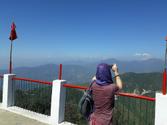
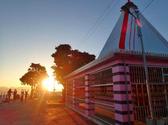
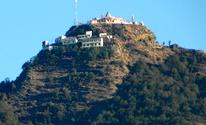


Kunjapuri Temple Location
Get Directions
Fairly Asked Questions
Some of the common questions asked related to Kunjapuri Temple
What is Kunjapuri Devi Temple?
Kunjapuri Devi Temple is a Hindu temple located in the town of Narendra Nagar in the Indian state of Uttarakhand. It is situated at an elevation of 1,676 meters (5,499 feet) and offers stunning views of the surrounding Himalayan mountains.
What is the significance of Kunjapuri Devi Temple?
Kunjapuri Devi Temple is one of the 52 shakti peeths (sacred places of worship dedicated to the goddess Shakti) in India. The temple is dedicated to the goddess Sati, who is believed to have immolated herself in protest against her father's disrespect of her husband, Lord Shiva. Kunjapuri is also said to be the spot where Lord Shiva cut off Sati's head, and her ear is believed to have fallen at the temple.
How do I reach Kunjapuri Devi Temple?
Kunjapuri Devi Temple is located about 30 kilometers (18.6 miles) from Rishikesh and can be reached by car or taxi. Visitors can also take a bus or shared jeep to Narendra Nagar and then trek up to the temple. The trek is about 2 kilometers (1.2 miles) long and takes approximately 45 minutes to an hour to complete.
What is the best time to visit Kunjapuri Devi Temple?
The best time to visit Kunjapuri Devi Temple is during the months of March to June and September to November, when the weather is pleasant and the skies are clear. The temple is also particularly popular during the Navratri festival, which typically falls in September or October.
What should I wear when visiting Kunjapuri Devi Temple?
Visitors should dress modestly and respectfully when visiting the temple, covering their shoulders and legs. It is also customary to remove shoes before entering the temple. As Kunjapuri Devi Temple is situated at a high altitude, visitors should bring warm clothing and sturdy shoes or trekking boots.
What is the entry fee for Kunjapuri Devi Temple?
There is no entry fee for Kunjapuri Devi Temple, but visitors can make donations to the temple if they wish.
Are there any restrictions on photography at Kunjapuri Devi Temple?
Photography is allowed at Kunjapuri temple, but visitors are asked to be respectful and not take photographs inside the temple. It is also important to ask for permission before taking photographs of any people, as some may not be comfortable being photographed.
Related Places to visit
Handpicked collection of most trending places to visit around Rishikesh
